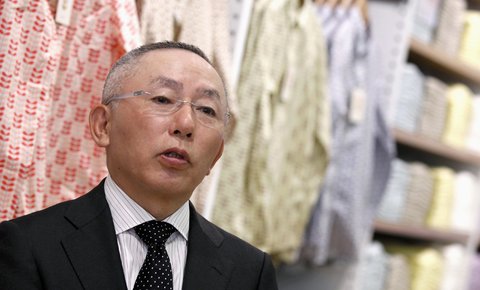
Ooh, we love a list! Especially a “best of” list. So happily, just in time for the weekend, comes Harvard Business Review’s 100 “Best-Performing CEOs in the World.” Fashion executives account for just more than 10 percent of the names — take a bow, Main Street — which is pretty good, but what’s really worth looking at is exactly which fashion executives made the cut. Bet you wouldn’t guess most of them.
In fact, do a little exercise before you read on: Scribble down five names you think would make the list — note the companies, not the people. Check your list against the one below, and let me know how many you got right.
Consider:
The first fashion name comes in at No. 11: Tadashi Yanai of Fast Retailing, which owns Uniqlo.
(On my list, I am not including mall owners, like David Simon of Simon Property Group, No. 5, or online retailers, like Jeffrey P. Bezos of Amazon, No. 1, because they are not in a fashion-only business.)
Then:
At 14, Pablo Isla Álvarez de Tejera of Inditex, which owns Zara.
At 25, Michael Balmuth of Ross Stores, an American chain of off-price department stores that operates as Ross Dress for Less. (Mr. Balmuth has been the company’s executive chairman since June.)
At 51, Carol Meyrowitz of TJX, which owns TJ Maxx and Marshalls.
At 52, Nick Hayek Jr., chairman of the Swatch Group, which also owns Harry Winston.
At 54, Blake W. Nordstrom of Nordstrom.
At 66, Terry J. Lundgren of Macy’s.
At 73, Herbert Hainer of Adidas.
At 76, Mark Parker of Nike.
At 81, Fabrizio Freda of Estée Lauder Companies.
At 84, Eric C. Wiseman of VF Corporation, which owns brands such as Seven for All Mankind, Lee and Vans.
At 92, Michael J. Kowalski of Tiffany & Company.
So how’d you do?
And anyone else notice what I am noticing?
Aside from Tiffany, Lauder and Swatch, there is a glaring absence of the glossy names most often hailed as fashion’s success stories, be it Michael Kors or LVMH Moët Hennessy Louis Vuitton. Perhaps that reflects the general luxury slowdown (the list was calculated according to “increase in total shareholder return and market capitalization”) or some of the smoke and mirrors on which fashion is based. It is, after all, an industry defined by the manipulation of appearance.
If I was an extrapolating kind of girl, which I am, this would suggest to me that Main Street, sports brands and midrange department stores are actually the ones to watch in this particular sector. It would suggest that accessibility may be a key word.
But that’s just me. What about you?
